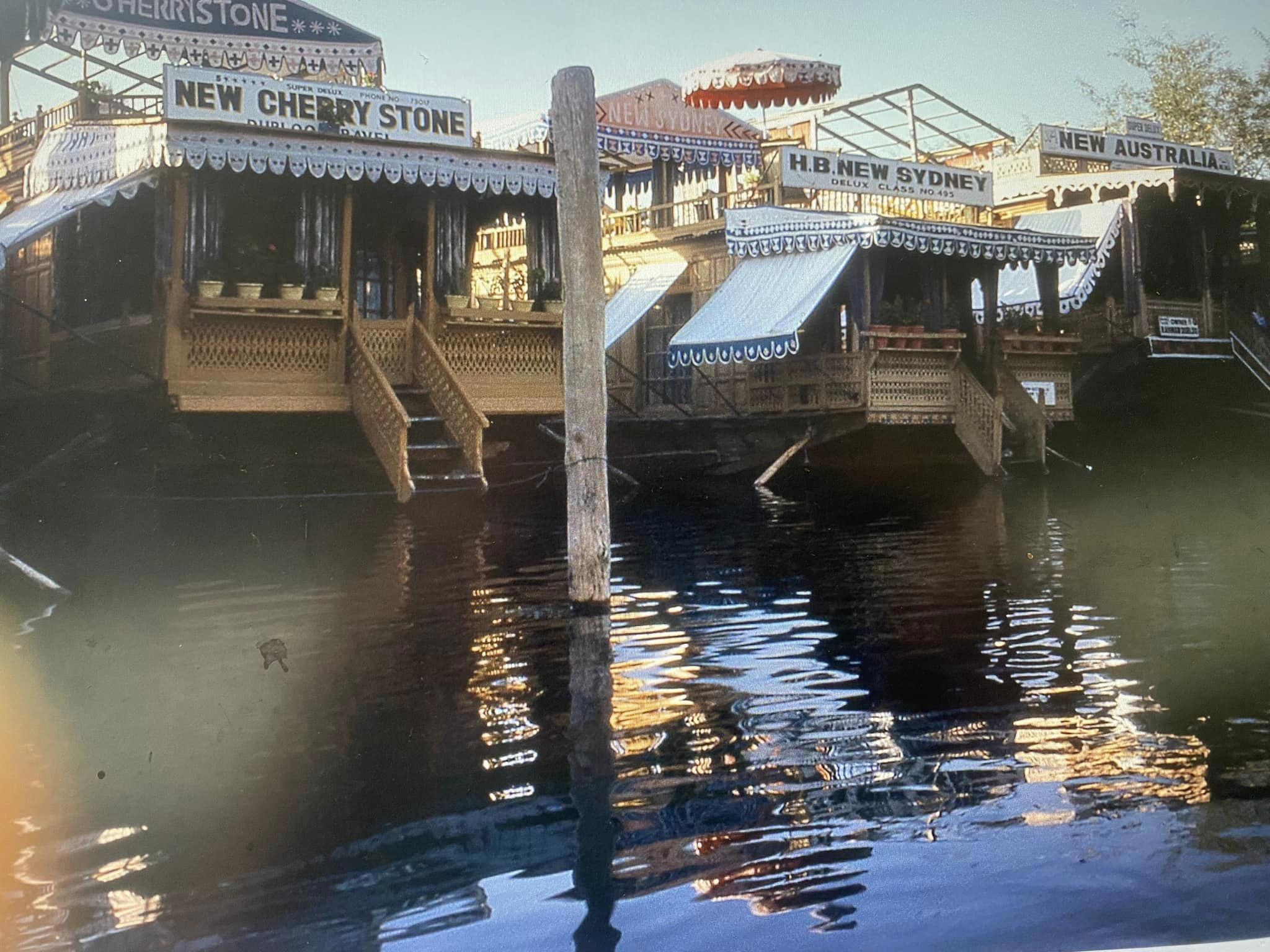
AsianOverland.net
Tour Guide - Itinerary
Asian Overland Sydney to London
Started 22/06/2022 Finished 21/06/2023365 Days ITINERARY
Day 112 date 11/10/2022SRINAGAR to SRINAGAR, KASHMIR, INDIA
ASIANOVERLAND.NET SYDNEY TO LONDON DAY 320/112/24: SRINAGAR TO DAL LAKE, KASHMIR, INDIA
August 1980 and 11th October, 1980
Srinagar is the largest city and the summer capital of the Indian territory of Jammu and Kashmir. It lies in the Kashmir Valley on the banks of the Jhelum River, a tributary of the Indus, and Dal and Anchar lakes. The city is known for its natural environment, gardens, waterfronts and houseboats, and is known as “the Venice of the East”.
The ancient Indus Valley civilisation extended further up the Jhelum River into the Himalayas in Kashmir than up the Indus River into Tibet, so the ancient homes of Hindu Gods are in Kashmir.
Dal Lake is mentioned as Mahasarit in ancient Sanskrit texts, which record that a village named Isabar to the east of Dal Lake was the residence of goddess Durga.
Kashmir is also the home of the Hindu God Shiva, so Kashmir is the ancient home of the most revered Hindu Gods, Shiva and Durga:
“I rouse and order battle for the people, I created Earth and Heaven and reside as their Inner Controller.
On the world's summit I bring forth sky the Father: my home is in the waters, in the ocean as Mother.
Thence I pervade all existing creatures, as their Inner Supreme Self, and manifest them with my body.
I created all worlds at my will, without any higher being, and permeate and dwell within them”.
(Devi Sukta (Durga or Kali), Rigveda 10.125.3 – 10.125.8)
Srinagar is also known for its traditional Kashmiri and Mughal handicrafts like hand woven silk and wool carpets, jewelry, paper mache’, wood carvings, steel, copper, Kashmir shawls and dried fruits.
The Kashmir region has always been an important centre of Hinduism, and later of Buddhism and Islam. In 1339, Shah Mir became the first Muslim ruler of Kashmir, inaugurating the Shah Mir dynasty.
Kashmir was part of the Mughal Empire from 1586 to 1751, and thereafter, until 1820, of the Afghan Durrani Empire. That year, the Sikhs, under Ranjit Singh, annexed Kashmir.
In 1846, after the Sikh defeat in the First Anglo-Sikh War, and the "purchase" of the region from the British under the Treaty of Amritsar, the Raja of Jammu, Gulab Singh, became the new ruler of Kashmir. The rule of the Raja’s descendants, under the tutelage of the British, lasted until the partition of India in 1947, when the princely state of the British Indian Empire became a hotly disputed territory, now administered by three countries: India, Pakistan, and China.
Kashmir encompasses a large area that includes the Indian-administered territories of Jammu and Kashmir and Ladakh, the Pakistani-administered territories of Azad Kashmir and Gilgit-Baltistan, and Chinese-administered territories of Aksai Chin and the Trans-Karakoram Tract.
Houseboats began to be built on Kashmir’s Dal and Nagin lakes in the late 19th century as a place for foreigners, who were banned by the King of Kashmir from owning land in Kashmir. More than a century later, there were more than 3,000 houseboats, as they featured in Bollywood films and became a tourism favourite in Kashmir.
The Kashmiri houseboats have sundecks where you can relax and sunbake, watch Dal Lake and the Himalayan mountain range, order Golden Eagle beer from across Dal Lake by yelling to the trader opposite, and otherwise wait for the traders to arrive on your houseboat.
Corrie and I loved Kashmir so much we returned quite a few times, including for our honeymoon in 1987, and we always stayed on the Houseboat New Melbourne beside Habib and Nazir Dubloo and their family. We even brought my Mum Peggy To Kashmir, so the Searles and the Dubloos are really one large family!!.
The Trip Book on the westbound overland reads:
"11 October, 1980
The carpet shop just made approximately $9,000 – and they stand to make a little more tomorrow.
Our money belts are in shock.
Spend spend spend.
A nice day going from market to factory from market to factory, & the girls once again went & spent & spent & spent.”
© This work is copyright. Apart from any use permitted under the Copyright Act 1968, no part may be reproduced by any process, nor may any other exclusive right be exercised, without the permission of Peter Searle, peter@portseavillageresort.com; 1980-2024.
Website built by Justin O’Dea www.webdeveloperdocklands.com.au


